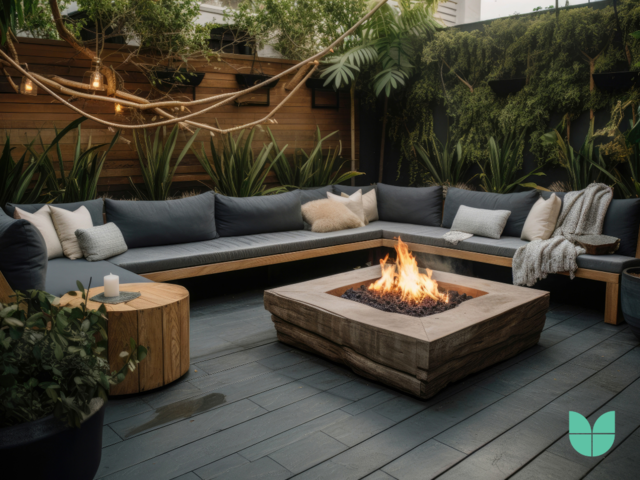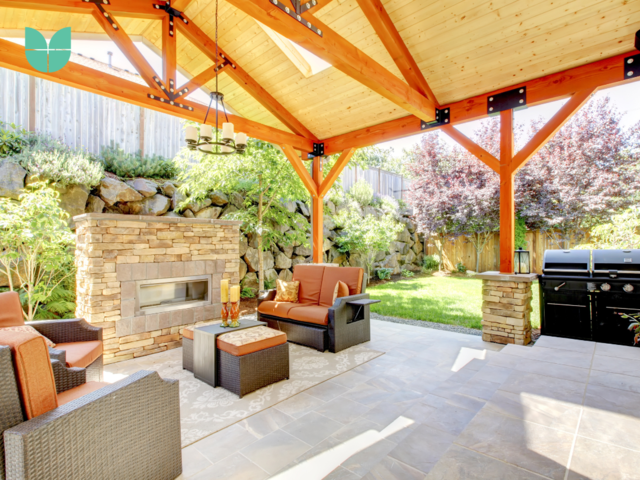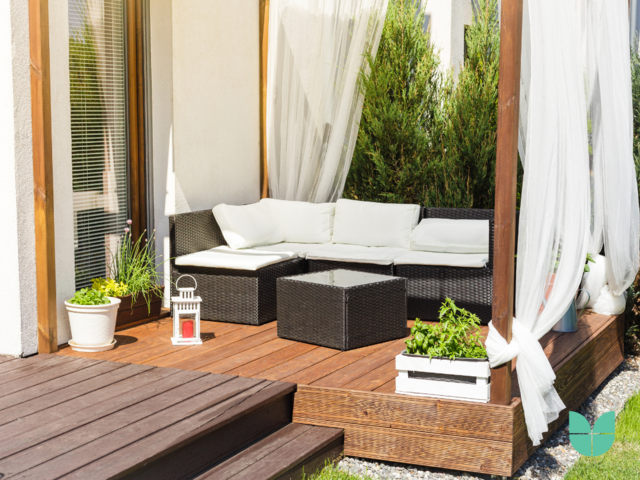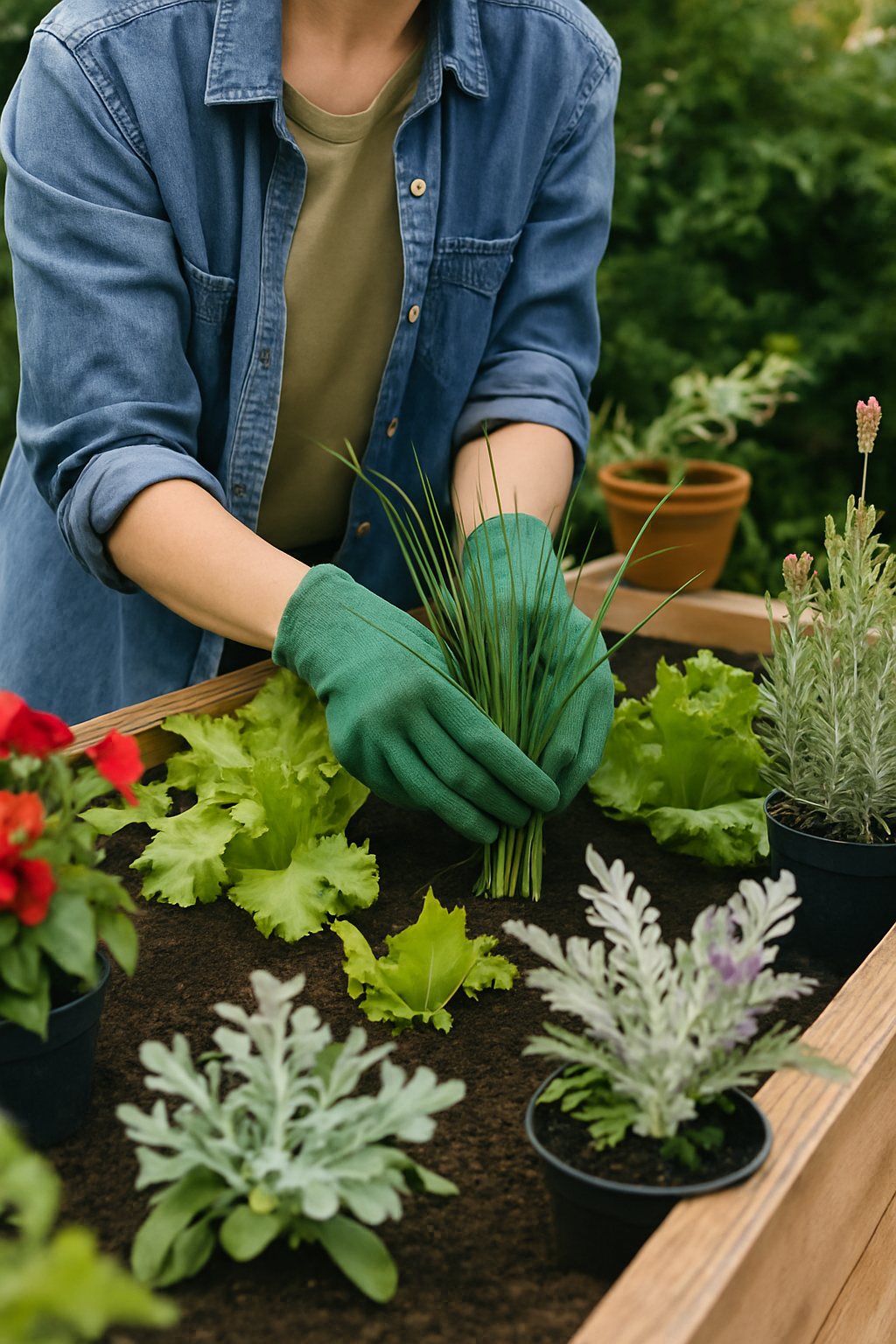As homeowners begin to appreciate the additional social space a garden can provide, gardens and outdoor spaces have never been more popular. With good planning, you too can expand your living space by adding another area to use for both social and personal enjoyment. And as a bonus, it may even add value to your property. In this blog we will examine what it takes to give your outdoor space a glow-up with advice and insights on how to make it both beautiful and functional. Everyone loves a garden party.

Survey your outdoor space
Before you begin, first take a look at the space and think about how you intend to use it. Be realistic about the amount of space available and how to make it functional. Start with the size and shape then factor the existing features including immovable features. Take some time to consider the strengths and weaknesses of your design within the parameters of your space, budget and legal/logistical constraints.
Assess the available space
Take careful measurements of your garden and consider the sun's position throughout the day. This will help you determine the best locations for various activities and where is best within the space for entertaining.
Identify the garden's advantages and disadvantages
Take note of any existing features that may affect your design, such as trees, structures, or slopes. Consider how you can incorporate or modify these elements into your plan to better suit your needs. Weigh up the pros and cons of moving or changing features that may perhaps have a knock-on impact to other areas of your design. For example, if you flatten a slope, will you need to plan for new drainage and will the sunlight reach a lower level area?
Consider the space's intended use and functionality
Consider the kind of entertaining you intend to do in your garden. Will you host large gatherings or small gatherings? Do you want a dedicated dining area, an outdoor kitchen, or a relaxing seating area? Are there children or people with mobility challenges to consider? Identifying your priorities early in the design will aid in guiding your design decisions and ensuring that your outdoor space meets your requirements.

Designing the garden space layout: Zones
The layout is the most fundamental design decision. It needs to be both functional and welcoming but must also suit your needs. One effective approach is to create distinct zones for various activities but it is important to also create a smooth flow between them.
- Designate areas for dining and lounging that have plenty of seating and space for guests to gather comfortably. Consider positioning the dining area close to the house for easy access to the kitchen, and make sure there is enough shade and lighting for both daytime and evening use.
- If you intend to include an outdoor kitchen or barbecue area, position it close to the dining area but far enough away to prevent smoke or cooking odours from disturbing guests.
- Create play and relaxation zones, such as a lawn area, a hammock, or a secluded seating area surrounded by greenery, for children to play and adults to relax.
To ensure a smooth flow while moving between the garden zones include paths, walkways, and transitions to guide visitors between areas of the garden. Use materials and plantings that complement the overall design and create a cohesive appearance throughout the space.
Selecting the best furniture and features for the garden space
Choose comfortable and long-lasting outdoor furniture made of weather-resistant materials such as teak, metal, or all-weather wicker that can withstand the elements and last a long time. Include cushions and pillows made of durable fabrics that resist fading and mildew for comfortable seating.
Incorporating built-in seating like benches and banquettes can add extra space for guests while also introducing a unique design element to your garden.
If you want to take your outdoor space to the next level of design, try to include focal points. Consider incorporating a fire pit, water feature, or sculpture that complements the style of your garden and serves as a visual centrepiece for your entertaining area.
Creating a relaxing and comfortable atmosphere
Strategically placed umbrellas or pergolas can provide shade and sun protection, making your entertaining area more comfortable on hot days. Awnings and shade sails can also provide flexible options for shading larger areas of your garden and can be adjusted as needed throughout the day.
Outdoor lighting can create beautiful ambient lighting as well as security in the garden. To illuminate walkways, highlight key features, and create a warm and inviting atmosphere, use a combination of path lights, spotlights, and festooned string lights.
Make your seating areas more comfortable and inviting by incorporating cosy elements such as cushions, blankets, and outdoor rugs. Select fabrics and patterns that complement your overall design while also adding a personal touch to your space.
Enhancing the space with plants and greenery
Embrace the outdoors by including plenty of greenery and plants. A range of flowers and plants will not only enhance the overall aesthetic of an outdoor space but it can provide privacy and a sense of enclosure.
When choosing your plants, opt for plants that require minimal upkeep and provide year-round interest, such as evergreens, ornamental grasses, and flowering shrubs. For plants to thrive, make sure they are suitable for your space and climate. Consider each plant's size, growth habits, and care requirements.
To create privacy and define boundaries in your garden, use hedges, trellises, or screens. Include plants or structures that complement your overall design while also providing the desired level of privacy for your entertaining area.
For outdoor spaces such as patios or balconies, container gardens or vertical planters are an ideal solution for adding greenery. These options allow you to add a variety of plants to your outdoor space without requiring extensive landscaping.

Personalising the outdoor living space
Your outdoor living space should be a reflection of your personal style and preferences. Personalise the space with decorative accents and personal touches. Think of the outdoor space as an extension of the interior of your home and choose colours and materials that complement the architecture and interior design of your home. This may also include decorative items such as outdoor artwork, sculptures, or colourful planters.
Tips for successful garden entertaining space
Consider the following tips to make your garden suitable for entertaining:
-
Make sure you have enough seating and table space for all of your guests. To accommodate different group sizes and seating preferences, consider including a mix of permanent and movable seating options.
- If you intend to incorporate an outdoor kitchen into your design, make sure it is well-equipped and efficient with plenty of counter space, storage, and access to utilities like water and electricity.
- Prepare for changing weather by providing shade and shelter, as well as heating elements such as outdoor heaters or fire pits for cooler evenings.
A well-designed outdoor living space can significantly improve the appeal of your home and provide a welcoming environment for entertaining friends and family. You can create a garden that is ideal for both entertaining and embracing the outdoors. Carefully consider your space by designing a functional layout and incorporating comfortable furniture, lighting, and greenery.
Remember that adding unique touches and decorative accents to your space will make it truly feel like yours. Keep these tips and ideas in mind as you plan and design your garden for entertaining to ensure a successful and inviting outdoor living area.
If you're interested in learning more about garden design and improving your skills, our Garden Design Academy has a variety of courses and resources to assist you in creating beautiful, functional outdoor spaces. Explore our courses today and begin your journey to becoming a skilled garden designer.

